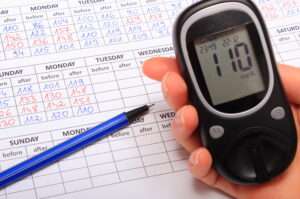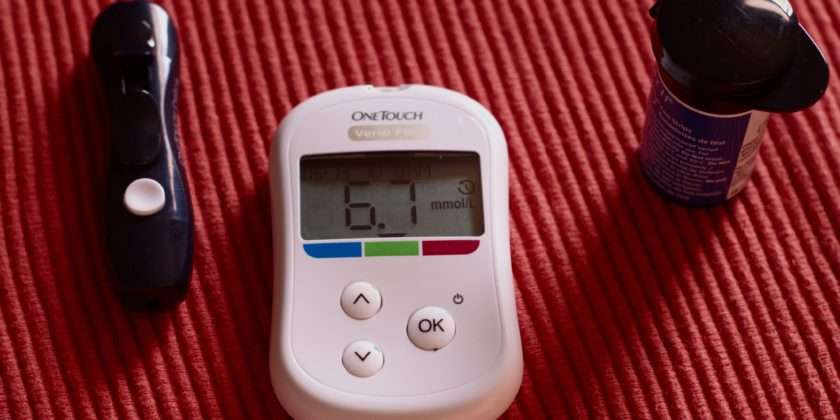Diabetes1 is a disease in which your blood glucose, or blood sugar, levels are too high. Glucose comes from the foods you eat. Insulin is a hormone that helps the glucose get into your cells to give them energy. With type 1 diabetes, your body does not make insulin. With type 2 diabetes, the more common type, your body does not make or use insulin well. Without enough insulin, the glucose stays in your blood. You can also have prediabetes. This means that your blood sugar is higher than normal but not high enough to be called diabetes. Having prediabetes puts you at a higher risk of getting type 2 diabetes. “This post “Diabetes Quick Facts: August 2019” seeks to provide helpful information about diabetes.
The Big Picture2
- More than 30 million people in the United States have diabetes, and 1 in 4 of them don’t know they have it.
- More than 84 million US adults—over a third—have prediabetes, and 90% of them don’t know they have it.
- Diabetes is the 7th leading cause of death in the United States (and maybe underreported).
- Type 2 diabetes accounts for about 90% to 95% of all diagnosed cases of diabetes; type 1 diabetes accounts for about 5%.
- In the last 20 years, the number of adults diagnosed with diabetes has more than doubled as the American population has aged and become more overweight or obese.
Risk
- You’re at risk for developing prediabetes or type 2 diabetes if you:
- Are overweight
- Are age 45 or older
- Have a parent, brother, or sister with type 2 diabetes
- Are physically active less than 3 times a week
- Have ever had gestational diabetes (diabetes while pregnant) or given birth to a baby weighing more than 9 pounds.

- African Americans, Hispanic/Latino Americans, American Indians/Alaska Natives, Pacific Islanders, and some Asian Americans are at higher risk for prediabetes and type 2 diabetes.
- American Indians/Alaska Natives are twice as likely as whites to have diabetes.
- During their lifetime, half of all Hispanic men and women and non-Hispanic black women are predicted to develop diabetes.
- Type 1 diabetes is thought to be caused by an immune reaction (the body attacks itself by mistake). Known risk factors for type 1 diabetes include:
- Family history (having a parent, brother, sister with type 1 diabetes)
- Age (it’s more likely to develop in children, teens, and young adults)
- In the United States, whites are more likely to develop type 1 diabetes than African Americans and Hispanic/Latino Americans.
- You’re at risk for developing gestational diabetes (diabetes while pregnant) if you:
- Had gestational diabetes during a previous pregnancy
- Have given birth to a baby who weighed more than 9 pounds
- Are overweight
- Are more than 25 years old
- Have a family history of type 2 diabetes
- Have polycystic ovary syndrome
- Are African American, Hispanic/Latino American, American Indian/Alaska Native, or Pacific Islander
- Gestational diabetes usually goes away after your baby is born but increases your risk for type 2 diabetes later in life.
- Babies born to mothers with gestational diabetes are more likely to have obesity as children or teens and are more likely to develop type 2 diabetes later in life too.
Complications
- People with diabetes are twice as likely to have heart disease or a stroke as people without diabetes—and at an earlier age.
- Diabetes is the leading cause of Chronic Kidney Disease in the United States, 2019, lower-limb amputations, and adult-onset blindness.
- Smokers are 30–40% more likely to develop type 2 diabetes than nonsmokers.
- People with diabetes who smoke are more likely to develop serious related health problems, including heart and kidney disease.
- In about 2 out of 3 American Indians/Alaska Natives with kidney failure, diabetes is the cause.
Details About Diabetes3

Diabetes is a chronic (long-lasting) health condition that affects how your body turns food into energy.
Most of the food you eat is broken down into sugar (also called glucose) and released into your bloodstream. When your blood sugar goes up, it signals your pancreas to release insulin. Insulin acts like a key to let the blood sugar into your body’s cells for use as energy.
If you have diabetes, your body either doesn’t make enough insulin or can’t use the insulin it makes as well as it should. When there isn’t enough insulin or cells stop responding to insulin, too much blood sugar stays in your bloodstream. Over time, that can cause serious health problems, such as heart disease, vision loss, and kidney disease.
There isn’t a cure yet for diabetes, but losing weight, eating healthy food, and being active can really help. Taking medicine as needed, getting diabetes self-management education and
support, and keeping health care appointments can also reduce the impact of diabetes on your life
Cost
- Medical costs and lost work and wages for people with diagnosed diabetes total $327 billion yearly.
- Medical costs for people with diabetes are twice as high as for people who don’t have diabetes.
Types of Diabetes (More detailed info)
There are three main types of diabetes: type 1, type 2, and gestational diabetes (diabetes while pregnant).
Type 1 diabetes is thought to be caused by an autoimmune reaction (the body attacks itself by mistake) that stops your body from making insulin. About 5% of the people who have diabetes have type 1. Symptoms of type 1 diabetes often develop quickly. It’s usually diagnosed in children, teens, and young adults. If you have type 1 diabetes, you’ll need to take insulin every day to survive. Currently, no one knows how to prevent type 1 diabetes.

With type 2 diabetes, your body doesn’t use insulin well and can’t keep blood sugar at normal levels. About 90% of people with diabetes have type 2. It develops over many years and is usually diagnosed in adults (but more and more in children, teens, and young adults). You may not notice any symptoms, so it’s important to get your blood sugar tested if you’re at risk. Type 2 diabetes can be prevented or delayed with healthy lifestyle changes, such as losing weight, eating healthy food, and being active.
Gestational diabetes develops in pregnant women who have never had diabetes. If you have gestational diabetes, your baby could be at higher risk for health problems. Gestational diabetes usually goes away after your baby is born but increases your risk for type 2 diabetes later in life. Your baby is more likely to have obesity as a child or teen, and more likely to develop type 2 diabetes later in life too.
Prediabetes
In the United States, 84.1 million adults—more than 1 in 3—have prediabetes. What’s more, 90% of them don’t know they have it. With prediabetes, blood sugar levels are higher than normal, but not high enough yet to be diagnosed as type 2 diabetes. Prediabetes raises your risk for type 2 diabetes, heart disease, and stroke. The good news is if you have prediabetes, a CDC-recognized lifestyle change program can help you take healthy steps to reverse it.
Jay Harold hopes you enjoyed this post, “This post “Diabetes Quick Facts: August 2019” seeks to provide helpful information about diabetes. Please share it on Facebook and Twitter. and read more about Jay Harold here. Please take this advice from Muhammad Ali and give back to others. “Service to others is the rent you pay for your room here on earth.”




